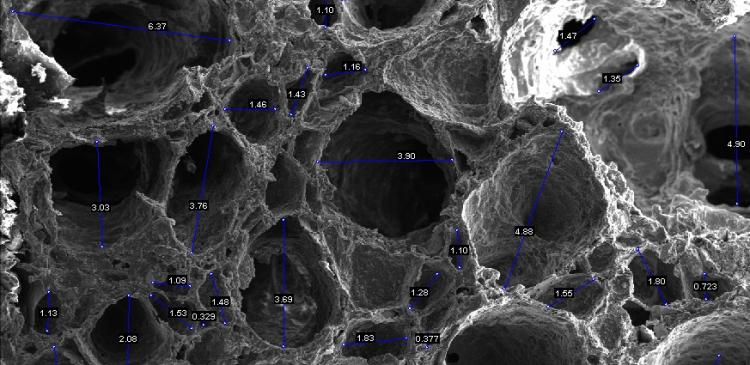Cockle shells (Anadara granosa) consist of about 96% calcium carbonate, which is present in a number of crystalline forms, including aragonite. Researchers investigated how this dense component can aid bone regeneration.
Cockles are a popular seafood, but it’s not just the edible interior of this marine-dwelling mollusc that could benefit our health. The shell, when transformed into nanosized particles, has the potential to support the growth of new bone tissue, according to scientists from University Putra Malaysia. The team conducted multiple laboratory tests to determine the suitability of powdered cockle shell, in combination with other natural materials, including gelatin, dextran and dextrin, for generating porous scaffolds to aid tissue engineering. A tissue scaffold provides an extracellular matrix that guides cells where bone has been lost or badly damaged, and helps the cells knit together into healthy tissue. If implanted into a patient, this temporary support should be able to degrade in harmony with the restoration process, vanishing only once the bone has been fully repaired. Cockle shells consist of about 96% calcium carbonate, which is present in a number of crystalline forms, including aragonite. Previous studies suggest that this dense component can be incorporated and replaced by bone tissue. Building on this, the group is keen to determine whether its nanostructured designs have the full range of morphological, physicochemical and mechanical properties required to be successful. Scanning electron microscopy images of the researchers’ test scaffolds, which were formed by freeze-drying different blends of the ingredients, revealed pores with a high degree of interconnection. This result is good news for cell seeding and growth. Compression testing highlighted a possible ionic enhancement of the assembly’s mechanical strength. The researchers believe that this structural boost could stem from the interaction of calcium present in the cockle shell with carboxyl groups found in the gelatin. To further withstand the growth of cells and enable new tissue regeneration, it is practical for the scaffold to be able to swell. The scientists found that the swelling rate significantly increased with greater proportions of gelatin, dextrin and dextran in the mixture. However, on first sight this finding presented the team with a problem, which they overcame using a coated framework. Decomposition of these three ingredients can acidify the surrounding environment and result in bone building cells, called osteoblasts, becoming less active. Fortunately, the alkaline quality of the cockle shell has a neutralising effect to combat such acidification. Out of all of the combinations examined, the researchers concluded that the optimum blend contains a mix of 50% nano-powdered cockle shell, 25% gelatin, 10% dextran and 15% dextrin. The group is now conducting further analyses, examining properties such as cell attachment, in order to advance their concept toward the end goal of bone repair. Further information Dr Saffanah Khuder Mahmood | E-mail: [email protected] Faculty of Veterinary Medicine Universiti Putra Malaysia Professor Md Zuki Abu Bakar | E-mail: [email protected] Faculty of Veterinary Medicine Universiti Putra Malaysia -------------------------------------------------- Asia Research News is our annual magazine to highlight exciting research studies from our partners. 25,000 copies are printed and distributed to key figures in research. Download a PDF copy from the link below or contact us if you would like print copies.




